Elastics
Orthodontic elastics, also referred to as “rubber bands” or “lacky bands”, are used by the orthodontist to help move the teeth in one jaw against the teeth in the other. That is, they help to adjust the bite.
The elastics come in a variety of sizes and strengths. The orthodontist decides which size and strength to use, depending on the amount of force required and the pattern to be worn.
The different elastics are given easy- to-remember names e.g. “Road Runner”, “Penguin”, so that patients do not have to remember the size and strength of their elastics, just the name on the packet.
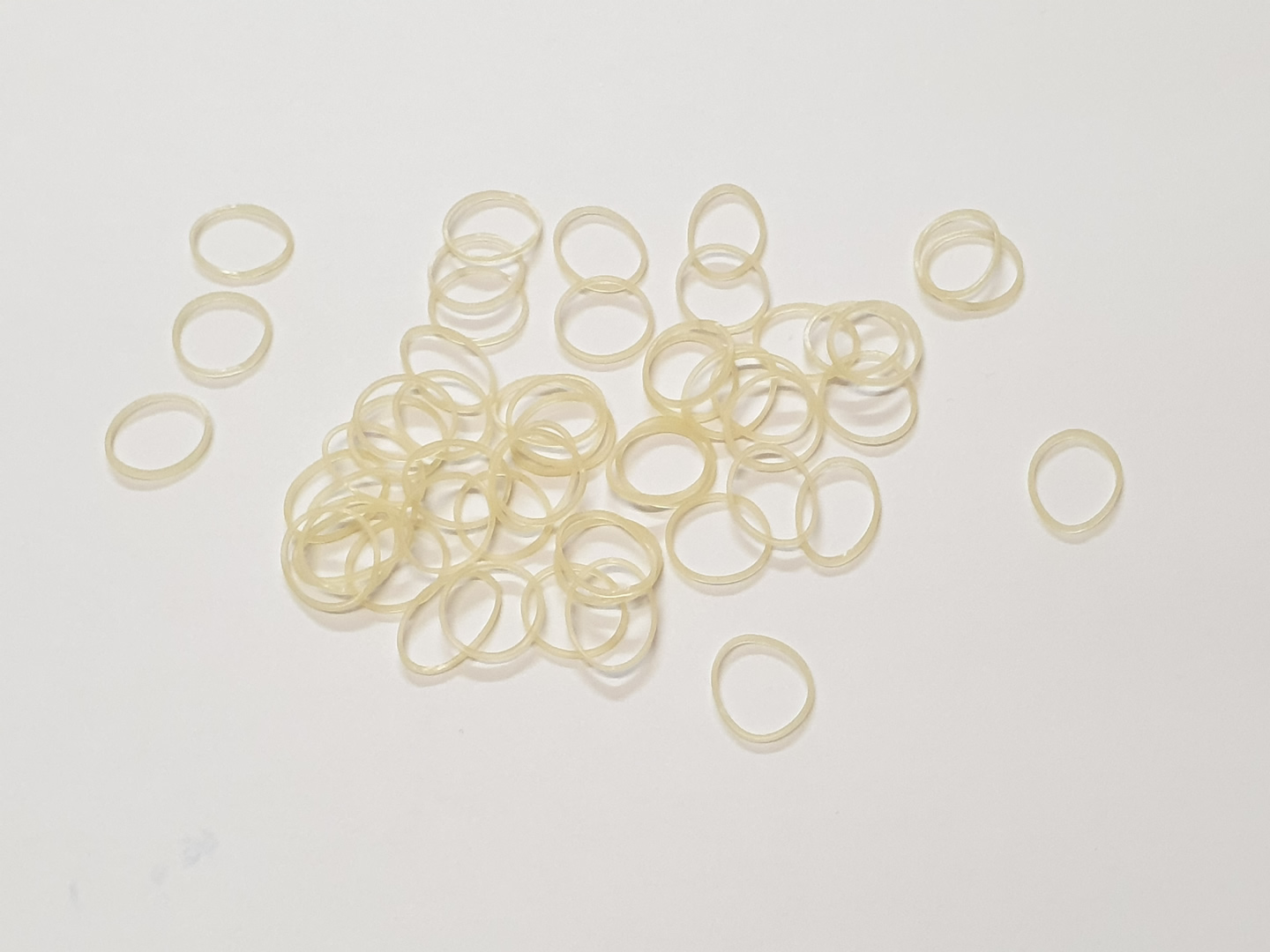
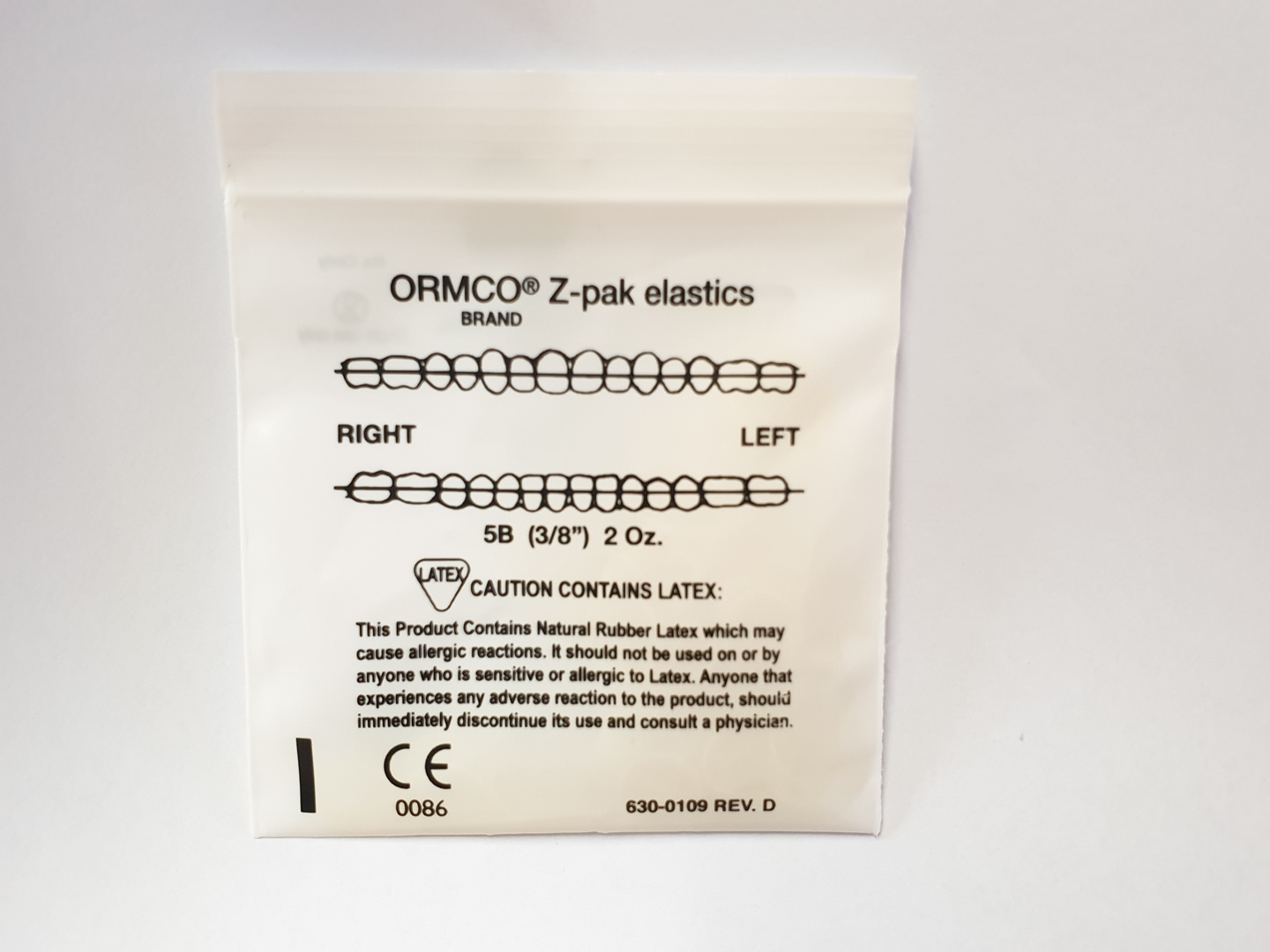
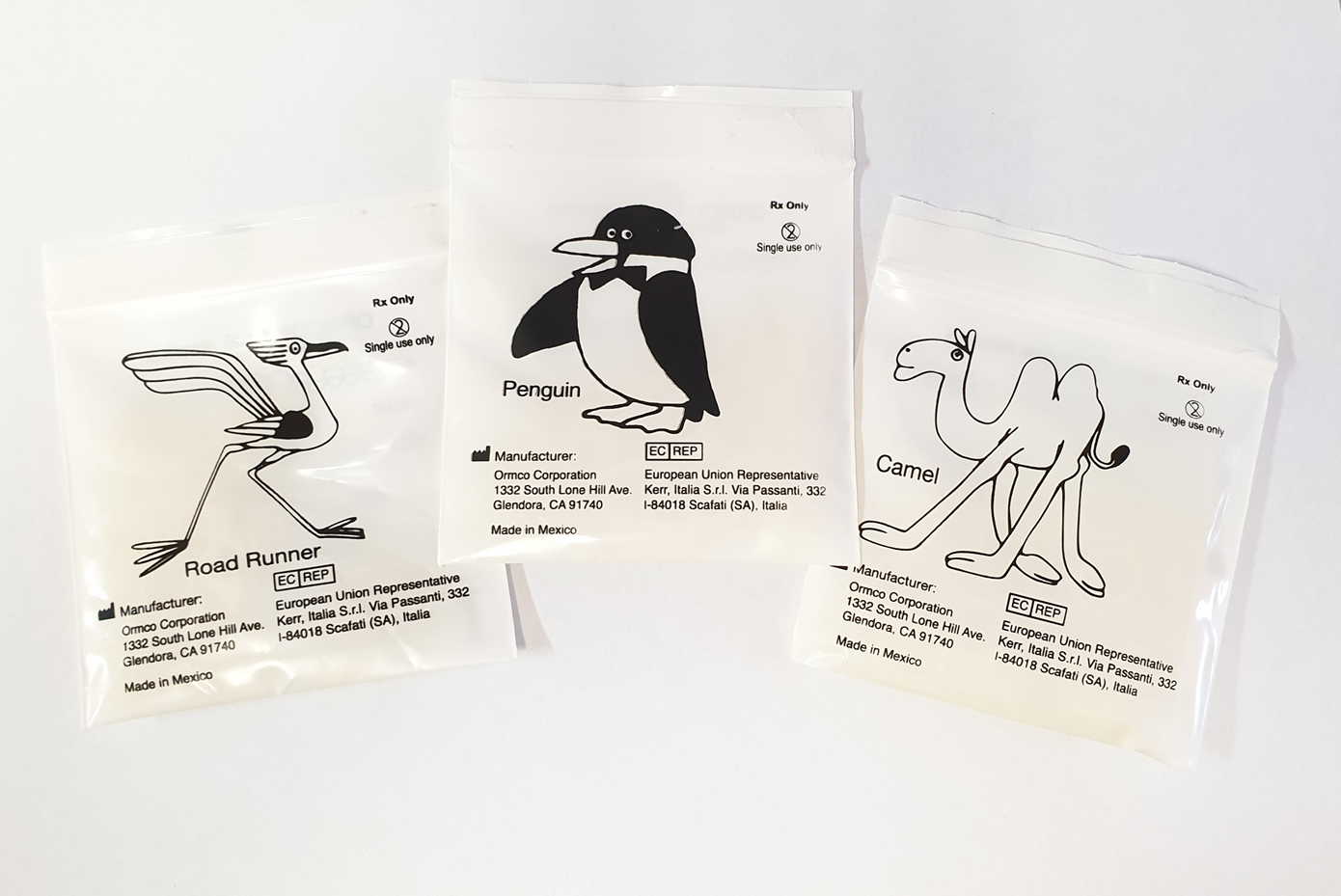
Common elastic patterns
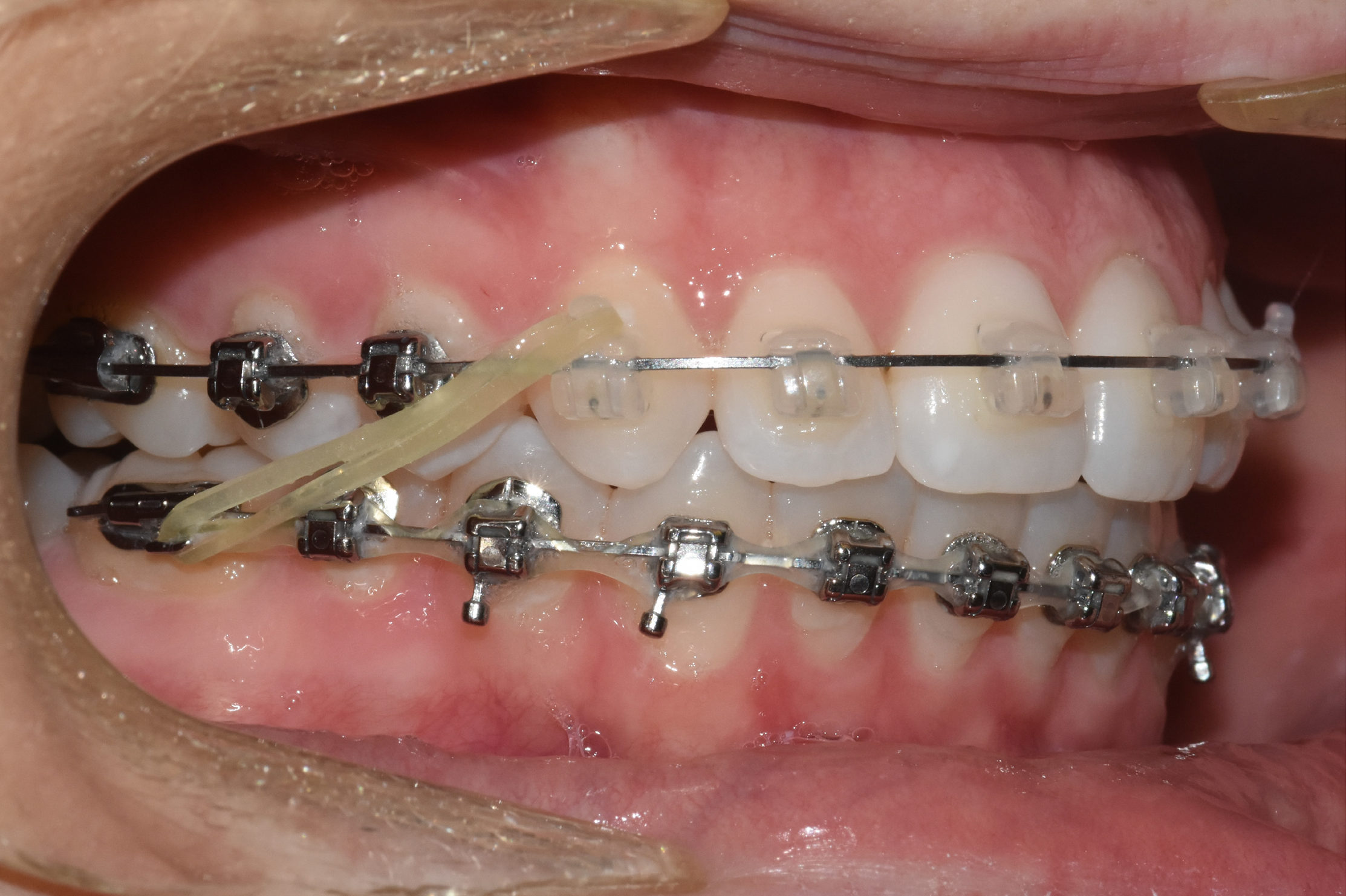
Class II (“Class two”) Elastics
The elastic is worn from a hook on the top front incisor or canine tooth back to the molar on the bottom. This elastic pulls the top teeth back and pushes the bottom teeth forward. It is commonly used in patients with protruded upper incisors (“buck teeth” or Class II malocclusion).
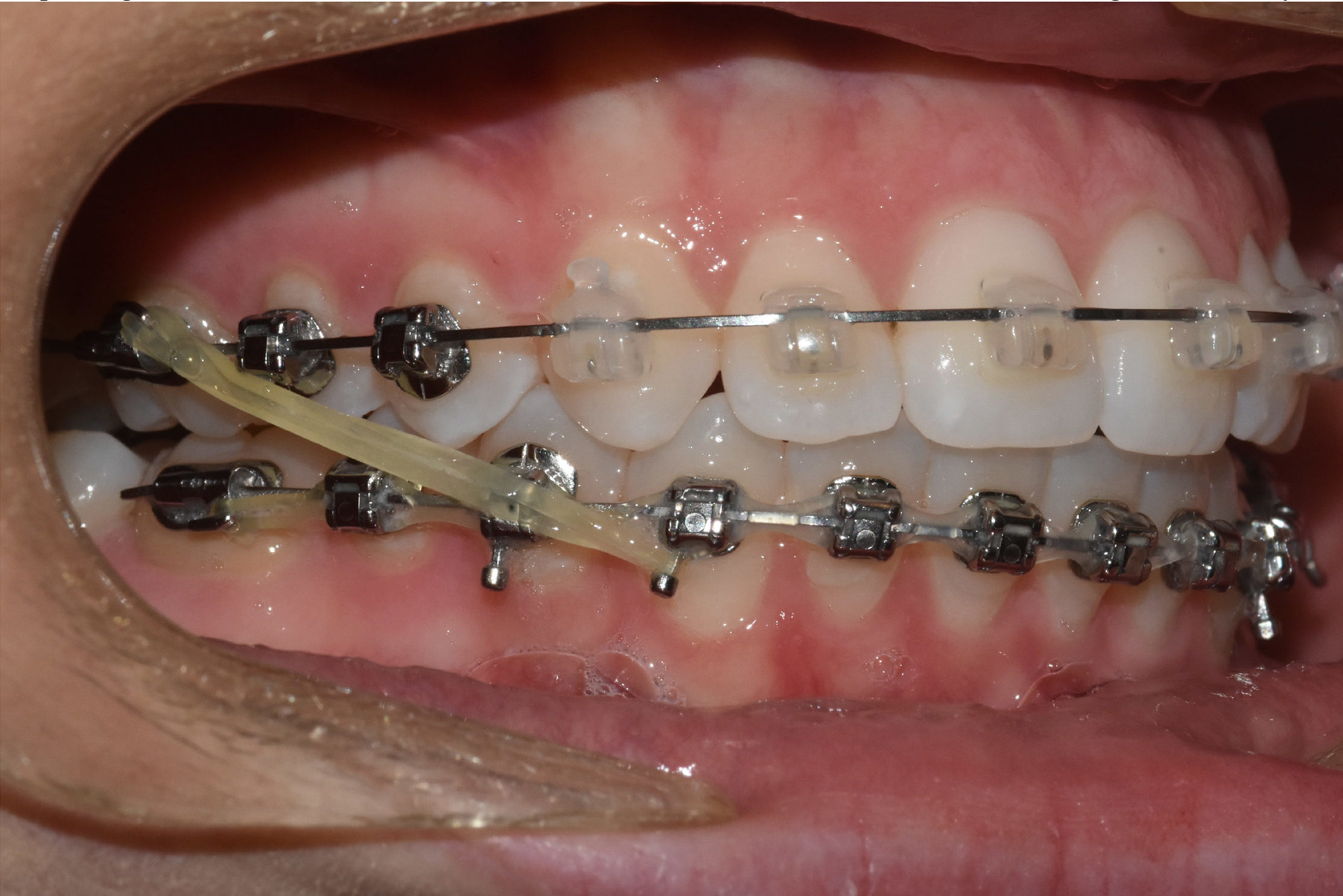
Class III (“Class three”) elastics
The elastic is worn from the bottom front canine tooth, back to the top molar tooth . It pulls the bottom teeth back and pushes the top teeth forward. This elastic is commonly used in patients with a prominence of the bottom teeth relative to the top (Class III malocclusion).

Triangle elastics
These elastics are used to “sock in” the bite, with the force concentrated in the front of the mouth.
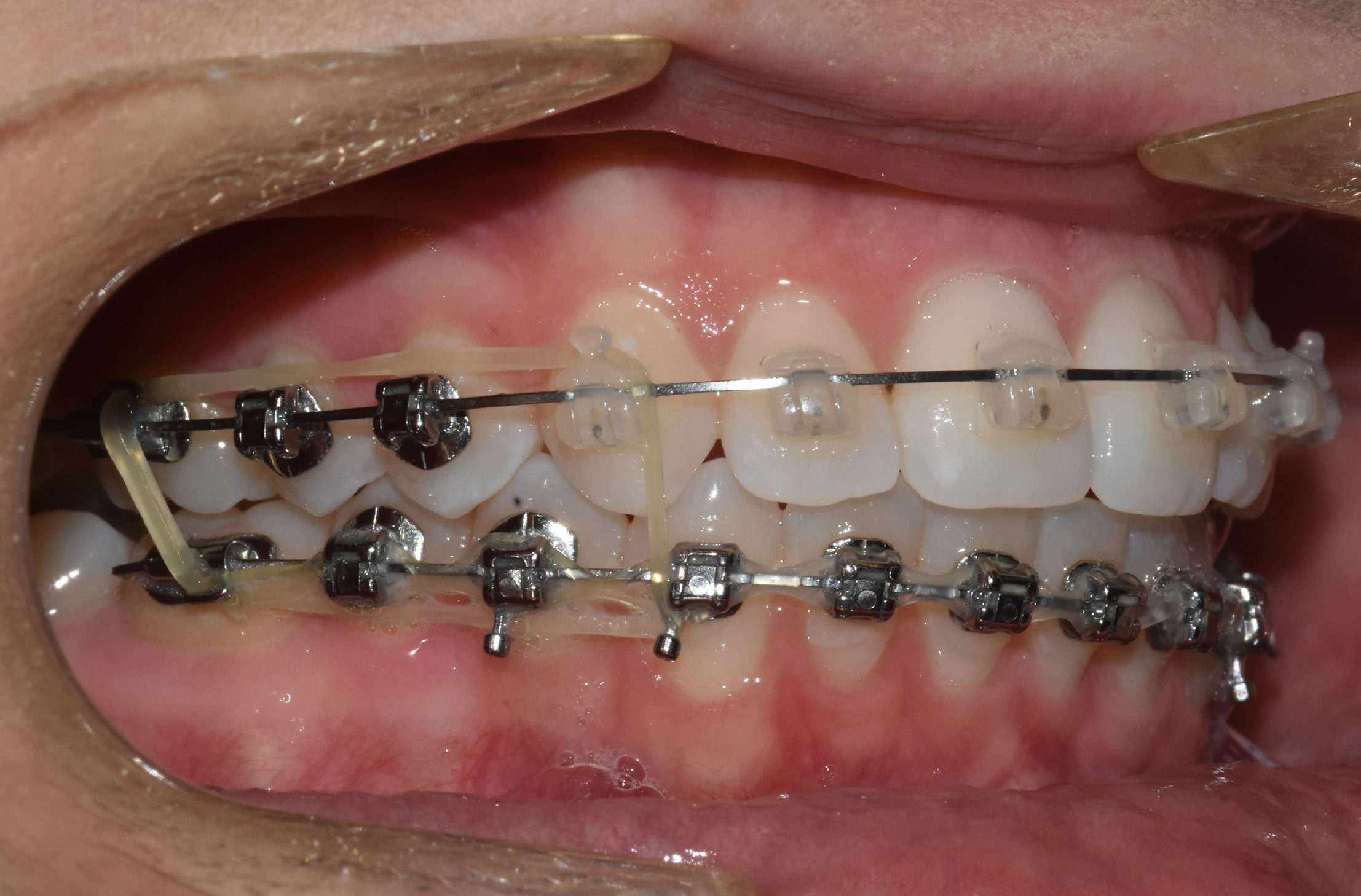
Box elastics
These elastics are also used to “sock in” the bite. In this instance the force is extended to the back teeth as well. The elastic is placed around molar and canine tooth, top and bottom.

